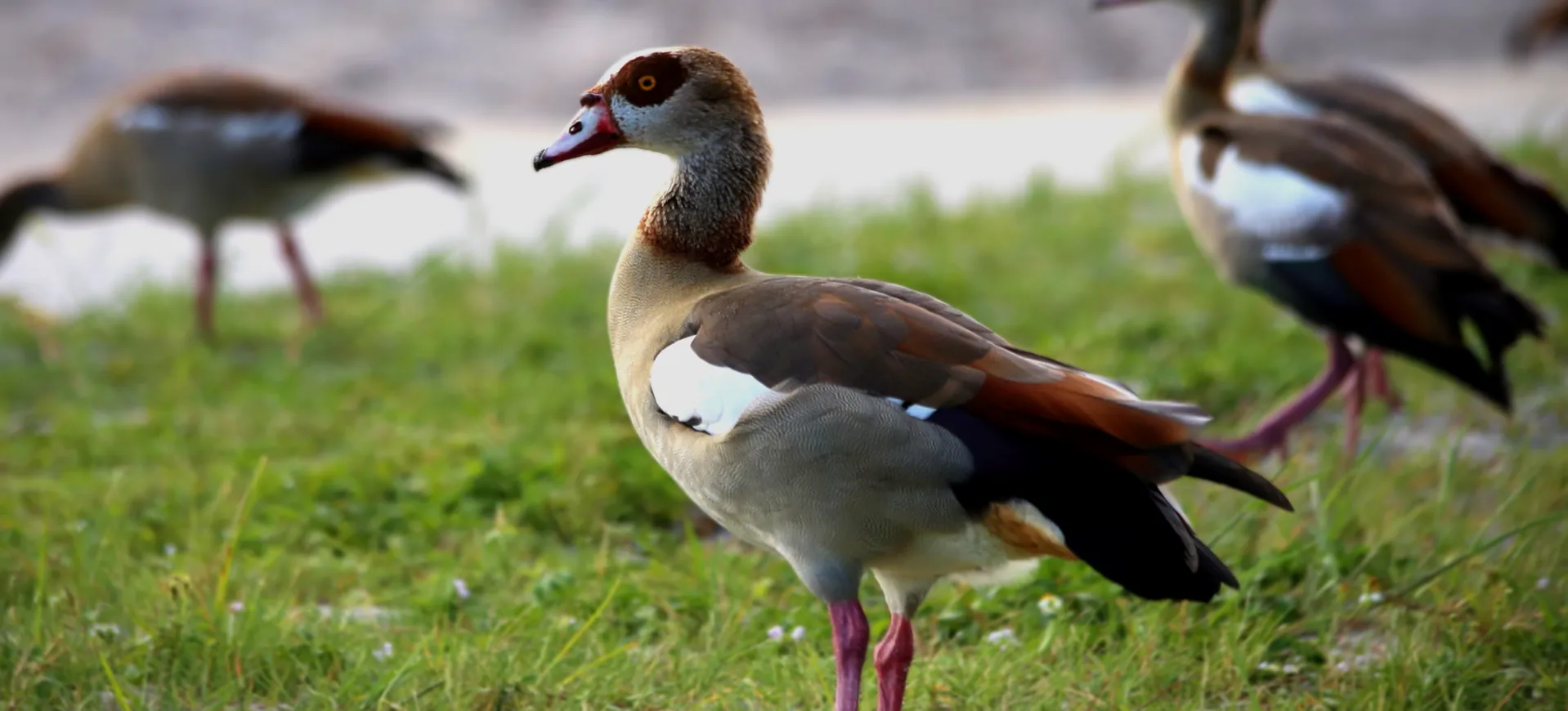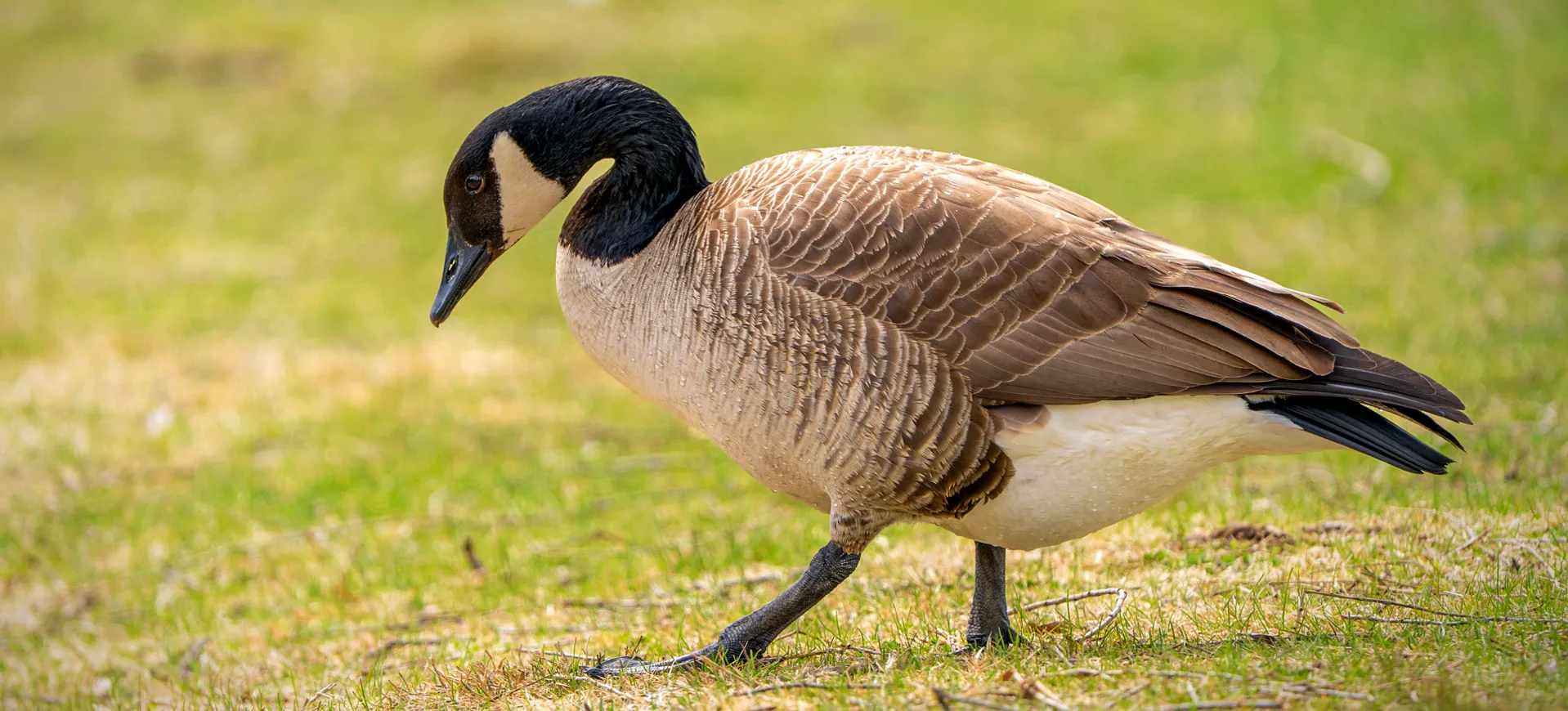Overview
The Hooded Merganser, scientifically known as Lophodytes cucullatus, is a small, striking waterfowl native to North America. This bird is renowned for its distinctive crest, which can be expanded or contracted and is particularly prominent in males. Male Hooded Mergansers exhibit striking plumage, with a black-and-white coloration, a large white crest bordered with black, and bright yellow eyes. Females are more subdued in color, with a brownish body, a smaller crest, and brown eyes, offering camouflage in their aquatic habitats.
These ducks prefer freshwater ponds, rivers, and swamps, especially those surrounded by dense forests. They are cavity nesters, often using holes in trees or nest boxes provided by humans. During the breeding season, Hooded Mergansers are territorial and can be seen performing elaborate courtship displays. In winter, they tend to be more social, joining larger flocks and sometimes associating with other species of waterfowl.
Hooded Mergansers are unique among North American waterfowl for their specialized feeding habits. They have serrated edges to their bills, helping them to catch and hold slippery fish, their primary diet. These ducks are excellent divers, plunging underwater to catch fish, frogs, and other aquatic prey. Unlike dabbling ducks, they Hooded Mergansers forage by diving and swimming underwater, using their feet and wings to propel themselves.
Taxonomy
Kingdom
Phylum
Class
Order
Family
Genus
Species
Type
Physical Description:
The Hooded Merganser is a small-sized duck with a distinctive slim and sleek profile. During the breeding season, adult males are particularly striking, with a black head and a large, fan-shaped white crest with a black border. Their eyes are a vivid yellow, and their bodies exhibit a sharp contrast of black and white with brown flanks. In contrast, females and juveniles are more muted, with a brownish body and a smaller, tawny crest.
They have a body length of about 16 to 19 inches, a wingspan of approximately 24 to 26 inches, and weigh between 1 to 2 pounds. Their bills are thin and pointed, with serrated edges, which are highly adapted for catching fish. Their legs are set back on their body, aiding in diving but making them less agile on land. Hooded Mergansers undergo a molt after the breeding season, with males losing their bright plumage temporarily.

Lifespan: Wild: ~15 years || Captivity: ~20 years

Weight: Male: 1.6–2.0 lbs (730–900 g) || Female: 1.4–1.6 lbs (640–730 g)

Length: Male: 17.3–19.3 in (44–49 cm) || Female: 16.5–18.1 in (42–46 cm)

Wingspan: Male & Female: 24–26 in (61–66 cm)

Top Speed: 50 mph (80 km/h)
Characteristic:
Native Habitat:
Hooded Mergansers are predominantly found in forested wetlands, rivers, and freshwater lakes across North America. They prefer habitats with clear water, which facilitates their fishing activities. Dense, wooded areas are essential for nesting, as they nest in tree cavities. Their habitat selection is influenced by the availability of suitable nesting sites and clear water bodies rich in fish.
During the non-breeding season, Hooded Mergansers often migrate to coastal waters, estuaries, and larger lakes and rivers. These winter habitats provide them with more open water areas, less likely to freeze over, allowing continued access to fish. The seasonal migration to different habitats reflects their adaptability and the variation in their ecological requirements throughout the year.
Climate Zones:
Biomes:
Biogeographical Realms:
Continents:
Diet:
Diet & Feeding Habits:
Hooded Mergansers are piscivorous, specializing in catching small fish, which constitute the majority of their diet. They also consume aquatic invertebrates, crustaceans, and amphibians. Their serrated bill plays a crucial role in gripping slippery prey. This diet reflects their adaptation to aquatic hunting and diving.
Their feeding behavior involves diving and swimming underwater, using their feet and wings for propulsion. They can be considerable depths and can submerged for up to two minutes. Hooded Mergansers typically forage in clear, shallow waters where fish are abundant. They have excellent underwater vision, which helps them locate and catch prey effectively.
Mating Behavior:
Mating Description:
Hooded Mergansers are monogamous during the breeding season, with pair bonds typically lasting for one season. Courtship displays are elaborate and involve both visual and acoustic signals. Males perform a variety of displays, including crest-raising, head-throwing, and bill-jerking, to attract females. These displays emphasize their striking crest and are often performed on the water.
Nesting occurs in tree cavities, either natural or provided by nest boxes. Females lay a clutch of 8 to 12 eggs, which they incubate for about 30 days. The male may stay with the female during the early stages of incubation but typically leaves before the eggs hatch. After hatching, the ducklings are precocial and can leave the nest within 24 hours, jumping from the nest cavity to follow their mother to the water.
Reproduction Season:
Birth Type:
Pregnancy Duration:
Female Name:
Male Name:
Baby Name:
Social Structure Description:
Hooded Mergansers exhibit a variable social structure, characterized by solitary or paired behavior during the breeding season and more social behavior during the winter. During breeding, they are territorial and monogamous, with pairs forming strong bonds. The male plays a role in courtship and defending the territory but typically leaves before the eggs hatch. The female is solely responsible for incubation and caring for the young.
In winter, Hooded Mergansers migrate to more temperate regions and often join larger flocks. These flocks can include other merganser species or different types of waterfowl. This social behavior in winter provides safety in numbers and increases foraging efficiency. They are less territorial during this time, allowing for greater interaction and socialization with other birds.
Groups:
Conservation Status:
Population Trend:
The population of Hooded Mergansers is generally considered stable and healthy. They are common within their range, especially in areas with abundant forested wetlands. During the breeding season, they are typically found in small groups or as solitary pairs, utilizing suitable nesting sites in their preferred habitats.
In winter, Hooded Mergansers can be found in larger flocks, often mingling with other species of waterfowl. These winter aggregations indicate a degree of social flexibility and adaptability to different environments. Despite facing potential threats such as habitat loss and degradation, the species has maintained a stable population, partly due to their adaptability and generalist feeding habits.
Population Threats:
The primary threats to Hooded Mergansers include habitat loss and degradation, particularly the loss of forested wetlands and nesting sites. Urbanization, agricultural expansion, and forestry practices can reduce the availability of suitable nesting and foraging habitats. Additionally, water pollution and changes in water quality can impact their food sources and overall health.
Climate change poses a long-term threat by potentially altering their habitat, especially affecting water levels and the availability of fish. Increased frequency of extreme weather events may also impact their breeding success and survival rates. Despite these challenges, their current population status remains stable, but ongoing monitoring and conservation efforts are essential.
Conservation Efforts:
Natural habitats, particularly forested wetlands. Protection of nesting sites, including providing nest boxes, has proven beneficial for their breeding success. Maintaining clean, unpolluted waterways is crucial for the health of the fish populations they depend on.
Research and monitoring programs help understand their population dynamics, migration patterns, and habitat requirements. Public education and awareness initiatives are also important to promote the conservation of Hooded Mergansers and their habitats. Collaborative efforts between wildlife agencies, conservation organizations, and local communities are key to effectively managing and protecting this species.
Additional Resources:
Fun Facts
- Hooded Mergansers are the smallest of the three Merganser species in North America.
- Their specialized eyes adapt to underwater vision, allowing them to see clearly while hunting underwater.
- The young ducklings can climb and jump, enabling them to leave the nest cavity and follow their mother to water shortly after hatching.
- Hooded Mergansers can control the buoyancy and dive to specific depths to catch prey.
- They are one of the few bird species with strong sexual dimorphism in their eye color.
- Hooded Mergansers are mostly silent, but they make a frog-like croaking sound during the breeding season.
- The male’s crest can be expanded or contracted, depending on whether they display or try to be inconspicuous.
- Despite their preference for fresh water, they can occasionally be found in brackish water environments.
- Hooded Mergansers often lay their eggs in nests abandoned by other species, like Wood Ducks.
- Their swift and agile flight makes them look more like small, fast raptors than typical ducks.














































































